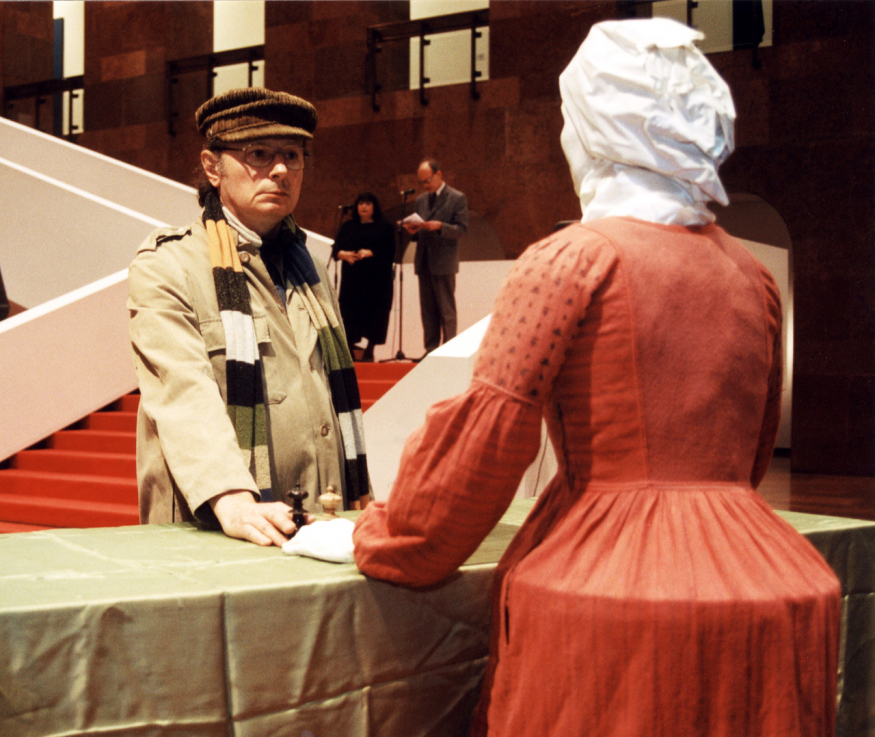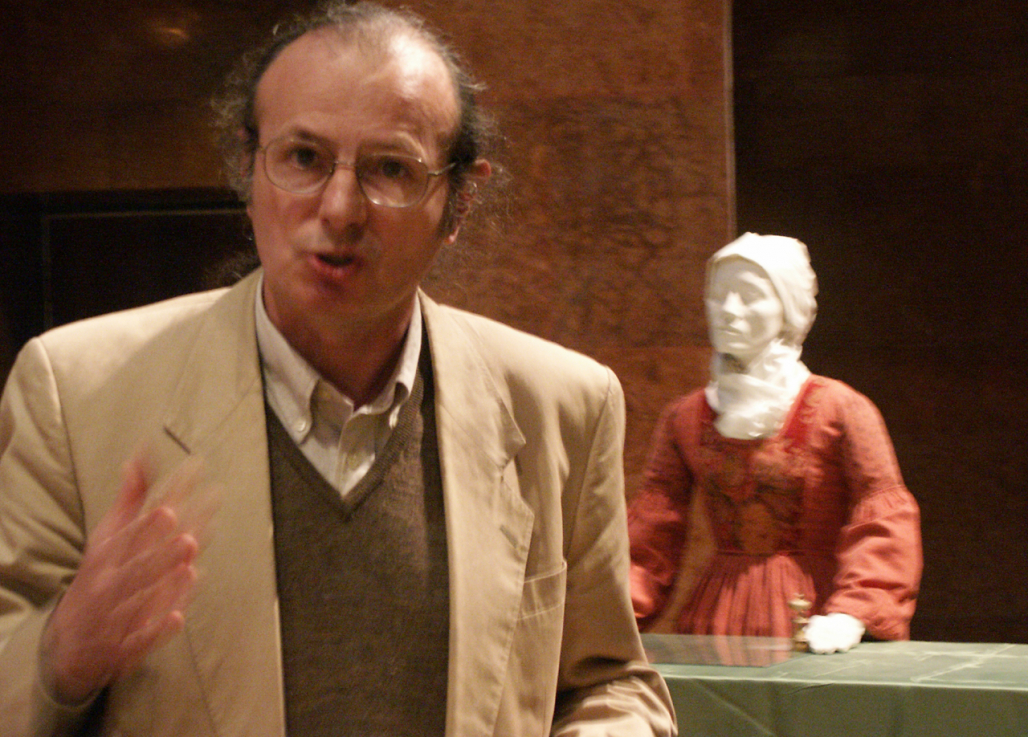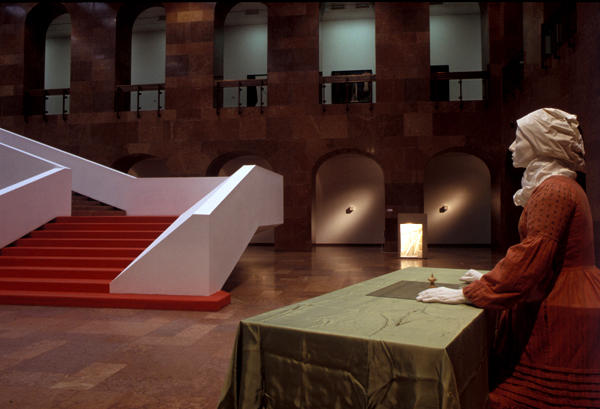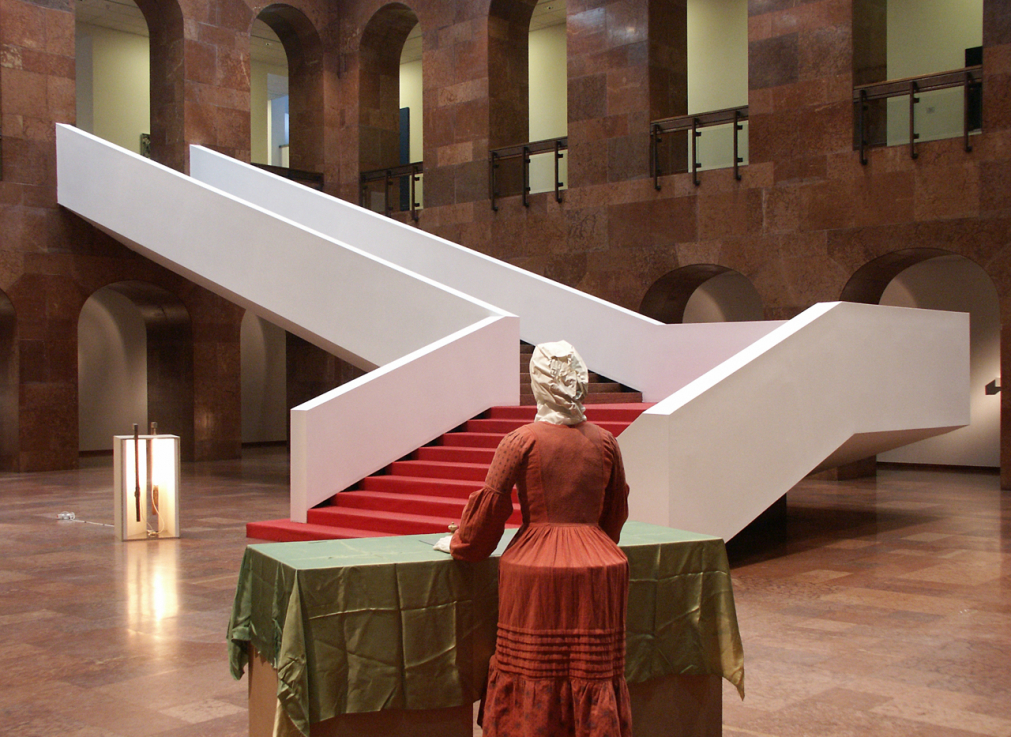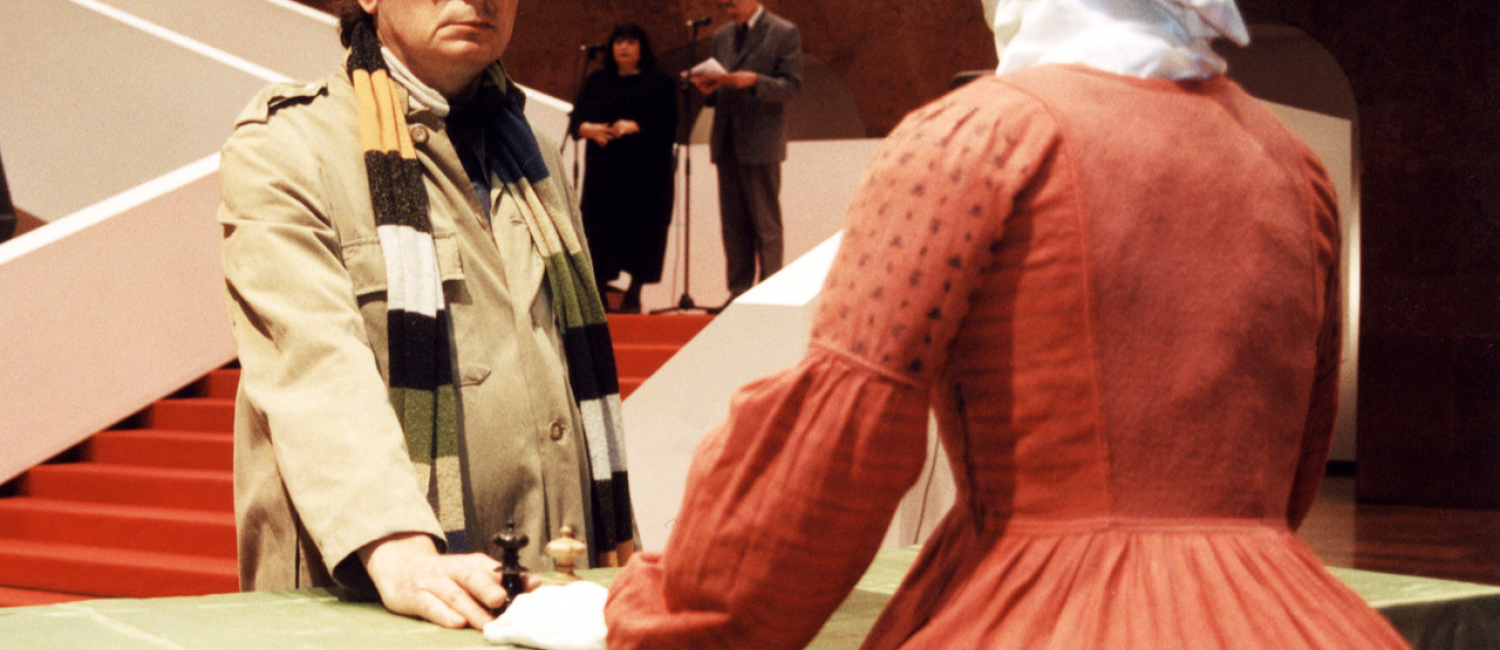The Museum has organised this exhibition to celebrate the artist’s 65th birthday and the publication of a monograph on György Jovánovics by the Corvina Publishing house. The exhibition has not been conceived as a traditional retrospective; it can rather be looked upon as a new artwork created by Jovánovics. The artist has selected a few characteristic artworks of his oeuvre and has placed them in a unique context.
Curtain Relief introduces the visitor to the exhibition: a piece from the artist’s object period, first presented in 1970 at the Fényes Adolf Gallery, Budapest. Art historian Ildikó Nagy has described this piece of art as the first indication of a paradigmatic change in Hungarian sculpture.
In this exhibition, one of the rooms presented in his 1980 exhibition at the French Institute, Budapest (Camera Obscura) has been partly reconstructed by Jovánovics. Along with this, he has also reconstructed his enigmatic Liza Wiathruck installation, so as to resume his unusual game of chess, marking the 200th anniversary of the genial polymath, Wolfgang von Kempelen’s death. The box installations (Ostgiebel; Kepler; The Birth of the Triangle; and even A Sketch Made within the Automaton) also pertain to this intellectual and spiritual motif.
The Péri Bagatelles series, dedicated to László Péri, one of the most significant figures of Hungarian avant-garde art, was first shown to the Budapest public at the Fészek Gallery in 2000, together with Jovánovics’s homage reliefs devoted to Kassák and Moholy-Nagy. Subsequently it travelled to Berlin, to be exhibited at the Neue Nationalgalerie in 2002.
György Jovánovics was born in 1939 in Budapest. He began his studies in art at the Sculpture Department of the Hungarian Academy of Fine Arts, Budapest (1958-60), to subsequently become a guest student at the Akademie für Angewandte Kunst, Vienna, Austria (1964), and the Académie des Beaux-Arts, Paris, France. Following his return to Budapest, he co-organised and took part in the “IPARTERV” exhibitions of avant-garde art, and regularly participated in other avant-garde art events. In 1971 he received a scholarship to the Folkwang Museum, Essen, Germany (with Imre Bak). Between 1980-83, he resided and worked in Berlin as a scholarship recipient of the DAAD, German Academic Exchange Service. In 1987 his monumental sculpture, The Trojan Paper Mill, was built in Seoul’s Olympic Park, South Korea. In 1992 his Memorial for the Martyrs of the 1956 Revolution was erected at the Rákoskeresztúr New Public Cemetery (Plot 301) in Budapest. Since 1990 György Jovánovics has been a Professor at the Hungarian Academy of Fine Arts, Budapest.
In 1995 he represented Hungary at the Venice Biennial, on its 100th Anniversary. In 1997 he received the highest form of recognition by the Hungarian Republic,
the “Kossuth” Award.
